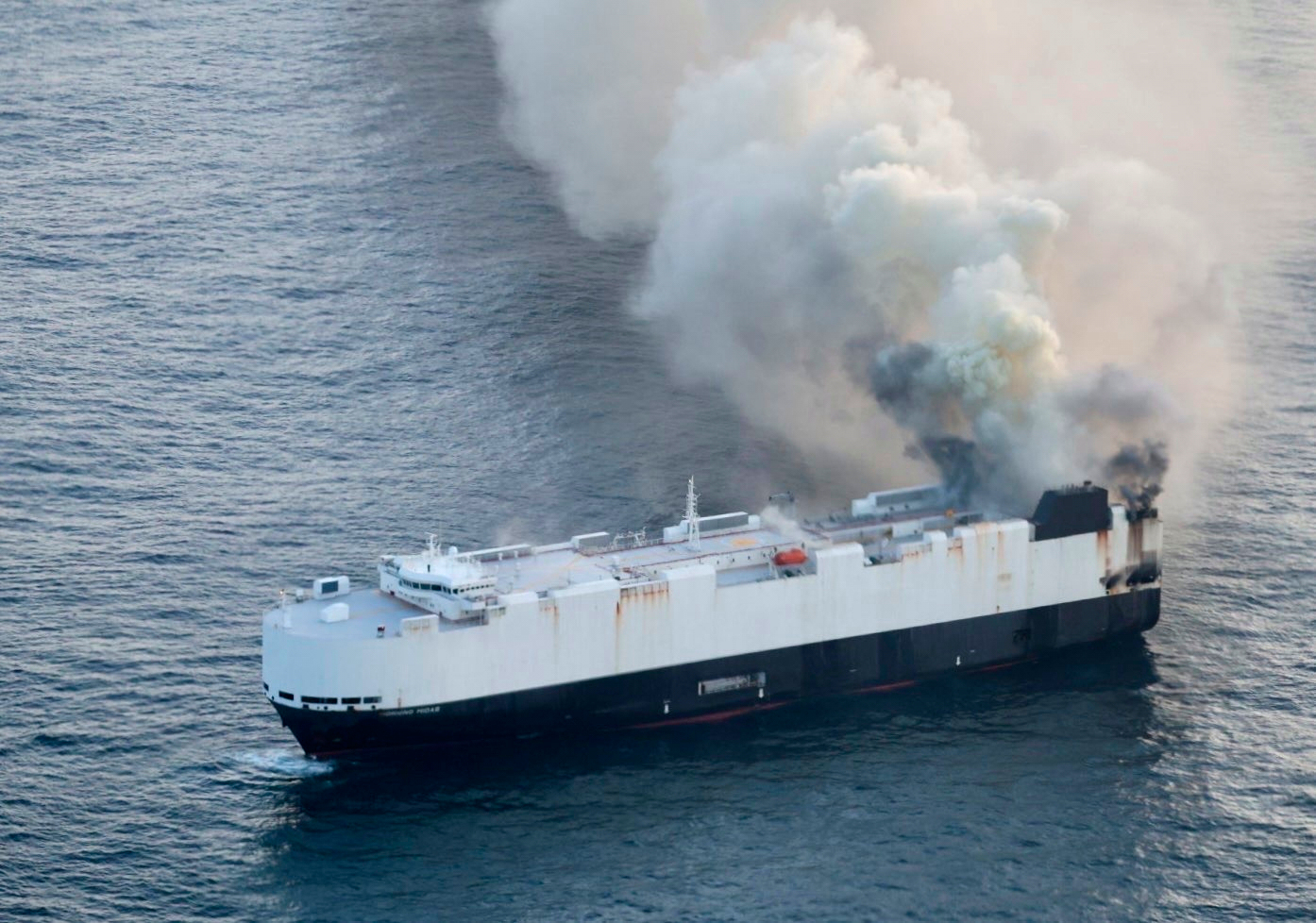The crew of a cargo ship carrying 3,000 vehicles, including 800 electric models, abandoned ship after an uncontrolled fire broke out off Alaska’s coast. All 22 members were safely rescued, raising concerns about maritime safety and the transportation of electric vehicles at sea.
22 crew members rescued from lifeboat in North Pacific after ship carrying 3,000 cars catches fire

Key Takeaways:
- A cargo ship carrying 3,000 vehicles caught fire off Alaska’s coast.
- The ship included 800 electric vehicles among its cargo.
- All 22 crew members safely evacuated and were rescued by a nearby vessel.
- The fire could not be controlled with onboard suppression systems.
- Authorities are coordinating salvage and firefighting efforts as the ship remains adrift.
Blaze Forces Evacuation of Cargo Ship Near Alaska
A cargo ship carrying 3,000 vehicles, including 800 electric vehicles, caught fire in the North Pacific waters off Alaska’s Aleutian island chain, prompting the crew to abandon ship. The incident has raised concerns about maritime safety and the challenges of transporting electric vehicles at sea.
The Uncontrolled Fire
On Tuesday, a large plume of smoke was seen billowing from the stern of the Morning Midas, originating from the deck loaded with electric vehicles. Despite initiating emergency firefighting procedures with the ship’s onboard fire suppression system, the crew could not bring the flames under control.
Rescue of the Crew
All 22 crew members evacuated onto a lifeboat and were rescued by the crew of a nearby merchant vessel, the Cosco Hellas. The rescue took place approximately 300 miles (490 kilometers) southwest of Adak Island, which is about 1,200 miles (1,930 kilometers) west of Anchorage, Alaska’s largest city. “There were no reported injuries among the 22 crew members of the Morning Midas,” the ship’s management company, Zodiac Maritime, stated.
Response Efforts
Zodiac Maritime, based in London, confirmed that relevant authorities had been notified. “We are working closely with emergency responders with a tug being deployed to support salvage and firefighting operations,” the company said in a statement. The U.S. Coast Guard dispatched aircrews to Adak and a ship to the area. As of Wednesday afternoon, smoke was still emanating from the vessel, and the status of the fire remained uncertain.
Rear Admiral Megan Dean, commander of the Coast Guard’s Seventeenth District, expressed gratitude for the assistance received. “We are grateful for the selfless actions of the three nearby vessels who assisted in the response and the crew of motor vessel Cosco Hellas, who helped save 22 lives,” Dean said.
About the Morning Midas
The Morning Midas is a 600-foot (183-meter) car and truck carrier built in 2006 and sails under a Liberian flag. The ship departed from Yantai, China, on May 26 and was en route to Lazaro Cardenas, a major Pacific port in Mexico. The cargo comprised 3,000 vehicles destined for the Mexican market.
Maritime Safety Concerns
This incident echoes a similar event earlier in the year when a freighter carrying 3,000 automobiles, including nearly 500 electric vehicles, caught fire from Germany to Singapore. That fire resulted in one death, several injuries, and burned uncontrolled for a week. The ship was eventually towed to a port in the northern Netherlands for salvage.
Such occurrences have heightened focus on safety issues at sea, particularly concerning the transport of electric vehicles. Electric vehicles’ lithium-ion batteries can pose specific risks if they catch fire, requiring different firefighting approaches compared to conventional vehicles.
The Bigger Picture
With more than 80% of international trade by volume arriving by sea, incidents like these underscore the importance of robust safety measures. The largest container vessels today are longer than three football fields, and the scale of modern maritime transport presents unique challenges. Improving emergency responses and preventive measures is crucial to safeguard crews, cargo, and the marine environment.
Ongoing Efforts
As the Morning Midas remains adrift, authorities continue to coordinate salvage and firefighting operations. Ensuring the safety of the crew and protecting the marine environment remain top priorities. The incident serves as a potent reminder of the perils faced in maritime transport and the need for continual advancements in safety protocols.











